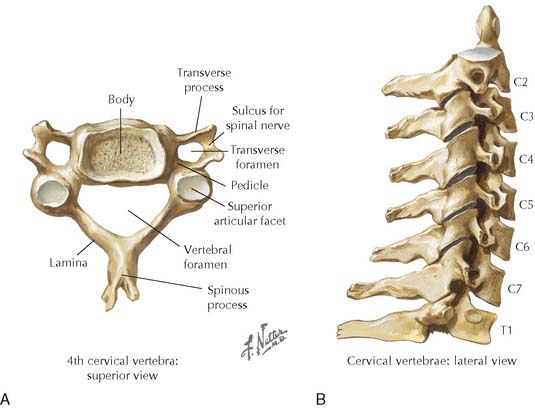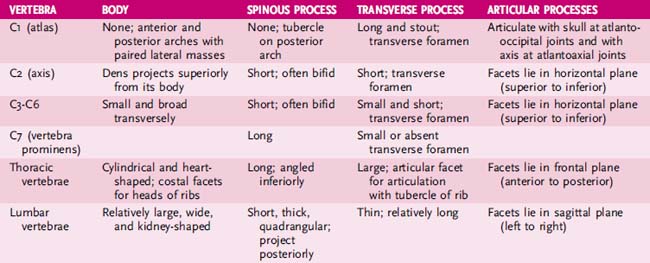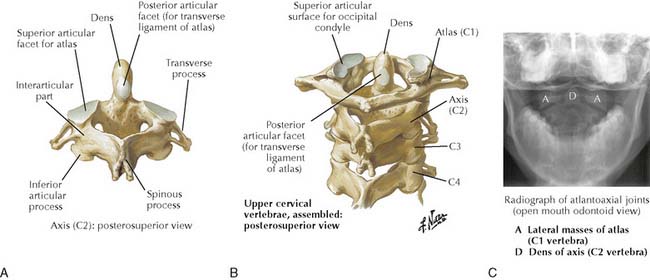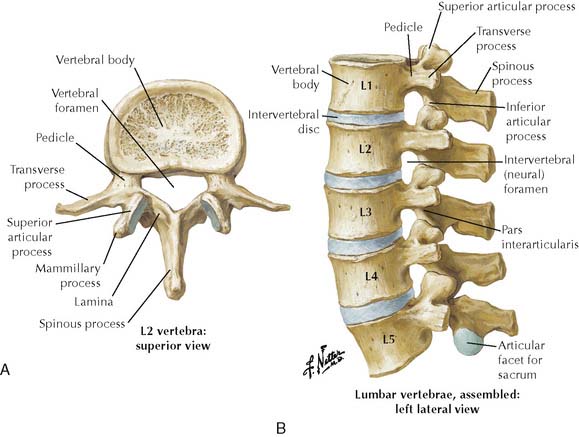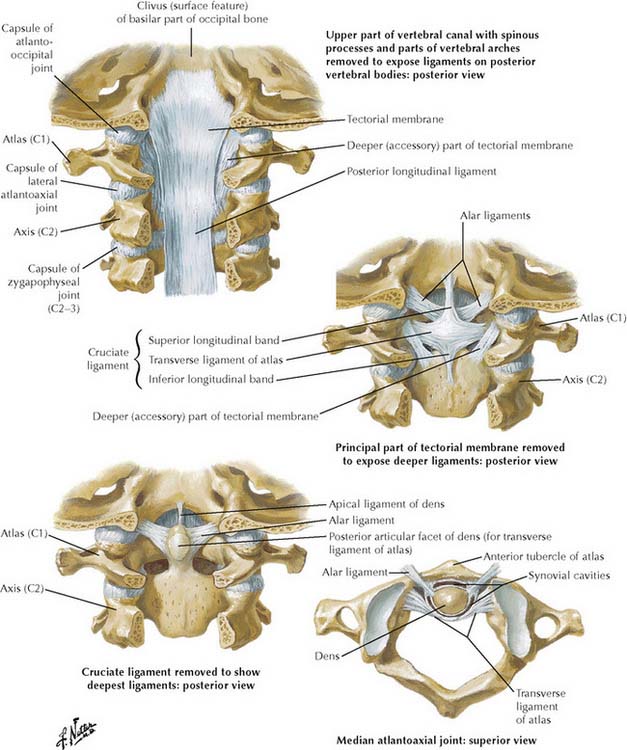Chapter 1 The Back
Anterior weightbearing cylinder
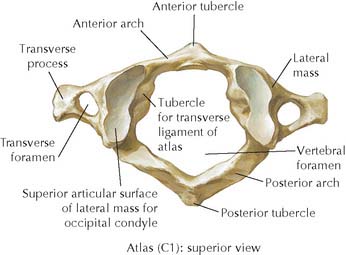
1-2 Atlas (C1) from superior view.
(From Greene, W B: Netter’s Orthopaedics. Philadelphia, Saunders, 2006, Figure 13-4.)

1-4 Typical thoracic vertebra. A, Superior view. B, Lateral view.
(From Netter, F H: Atlas of Human Anatomy, 4th ed. Philadelphia, Saunders, 2006, Plate 154.)
Stress fractures of the pars interarticularis occur frequently in lumbar vertebrae (spondylolysis), with the posterior part of the vertebral arch separating from the anterior part to cause back pain. It occurs commonly in L5 in adolescent athletes involved in sports that require repeated spinal hyperextension. The vertebral column is not misaligned in unilateral fractures, which show up in oblique lumbar radiographs as a collar on the neck of the “Scottie dog” (Figure 1-6).
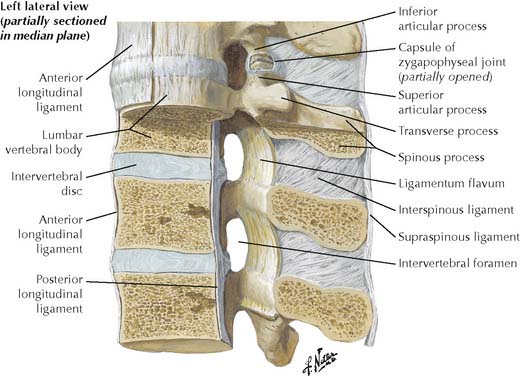
1-7 Ligaments connecting vertebrae.
(From Netter, F H: Atlas of Human Anatomy, 4th ed. Philadelphia, Saunders, 2006, Plate 158.)
Rupture of the nucleus pulposus through the anulus fibrosus causes a herniated intervertebral disc. Herniated discs usually occur in lumbar (L4/L5 or L5/S1) or cervical regions (C5/C6 or C6/C7) of individuals younger than age 50 and may impinge on spinal nerves or their roots. Herniations may follow degenerative changes in the anulus fibrosus or be caused by sudden compression of the nucleus pulposus. Herniated lumbar discs usually involve the nerve root descending to exit the intervertebral foramen inferior to the vertebra below (traversing root) rather than the nerve root leaving the vertebral canal at the level of the disc (exiting root) (Figure 1-8).
TABLE 1-2 Ligaments of Vertebral Column
| Ligament | Attachment | Comments |
|---|---|---|
| Supraspinous | Connects tips of spinous processes | Limits flexion of vertebral column; expanded in cervical region as ligamentum nuchae |
| Interspinous | Connects spinous processes of adjacent vertebrae | Limits flexion of vertebral column |
| Anterior longitudinal | Attached to anterior surface of vertebral bodies and intervertebral discs | Limits extension of vertebral column; supports anulus fibrosus and may be strained or torn in whiplash |
| Posterior longitudinal | Attached to posterior surface of vertebral bodies and intervertebral discs and lies within vertebral canal | Limits flexion of vertebral column; supports anulus fibrosus and directs herniation of intervertebral disc posterolaterally |
| Ligamentum flavum | Paired ligament that connects laminae of adjacent vertebrae | Limits flexion of vertebral column; yellowish due to elastic tissue |
